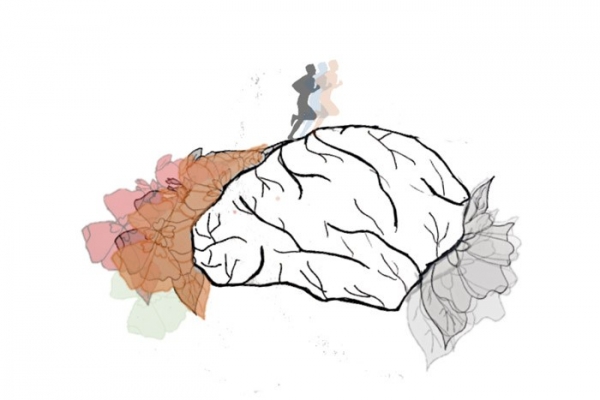Most obesity interventions focus on restricting calorie intake through diet or increasing energy expenditure through exercise. For this reason, obesity is often perceived as an individual’s lack of self-control to eat a healthy, well-portioned diet and follow exercise regimes. However, there may be some invisible factors pressing the scale. According to a recent study conducted by Uku Vainik from McGill’s Department of Neurology and Neurosurgery, the brain changes associated with obesity might have genetic roots.
In a comparative study of cognition and body mass index (BMI), Vainik’s team saw individuals with higher BMIs rank lower in cognitive ability when challenged with delayed gratification and visual deduction tasks. Additionally, Vainik’s study determined that brain tissue in subjects with higher BMIs was found in higher quantities in regions associated with emotional responses to food cues and decreased in areas used in understanding context and episodic memory. Taken together, a brain profile emerges in which obesity arises from a cycle of being hypersensitive to food stimuli and then being unable to adequately inhibit an emotional or appetitive response.
With a deeper understanding of how underlying cognitive differences may affect an individual’s BMI, Vainik asked whether these observable differences were a result of environmental or genetic factors. Distinguishing between the environmental and genetic influences of a particular characteristic like obesity is important when designing models to improve health outcomes.
“We were interested in the behavioural and neurological correlates of obesity [and how they overlap],” Vainik wrote in an email to The McGill Tribune.
By examining the brain structures and cognitive profiles of twins and siblings no longer sharing the same living environment, Vainik was able to test genetic heritability due to genetic factors.
Given their different living conditions, any similarity in the siblings’ neurological impulses would be due to their shared genetics and not environmental factors. Based on this presumption, Vainik found evidence for the genetic heritability of obesity, with similarities of 77 to 89 per cent in obesity-associated brain areas between pairs of siblings or twins.
The growing body of research connecting irregularities in brain structure and functioning to obesity means that current interventions should not focus solely on calorie restriction. Oftentimes, diet-focused weight loss schemes only result in an increased craving for food and a resurgence of any weight lost. A better strategy to reduce overeating is to stock up on healthy foods and to eat fewer calorie dense foods.
“The obesity epidemic of the last few decades has been enabled by the oversupply of cheap and nutrient-dense food,” Vainik wrote. “This creates multiple opportunities for people to overeat […] because, ultimately, [obesity] is acquired through behaviour, [or] by eating too much food.”
Calorie-dense foods tend to be items containing refined sugars and carbohydrates, while healthier options are usually vegetables or other natural foods. Eating more natural and nutritional foods often gives the feeling of satiety faster since the brain thinks it ate a lot, when in fact the true number of calories is quite low.
While the world may be filled with the tempting aromas of samosas and churros, these food cues can be removed in the controlled environments of the home where one spends a significant portion of their day.








